Inconnu
InconnuDoubling varies from partial to completely double; Fl. 100 mm wide; perianth and other petaloid segments ovate, light greenish yellow, white mucro, flushed with slightly darker tone, becoming darker at base, often with green beneath, inflexed, twisted or recurved, separated; cup is funnel-shaped, smooth, vivid yellow, slightly paler at base, sometimes with green at apex, the six segments opposite the perianth segments and bi-lobed, spreading, with rim rolled; the cup filled with petaloid and corona segments in alternate whorls; the petaloid segments longer than the darker corona segments.
A description according to Daffodils, narcissus, and how to grow them as a hardy plants for cut… 1907 by Arthur Martin Kirby, when identified as ‘Double Van Sion’, “This famous double yellow daffodil of old American gardens is also very popular in Europe under the name of ‘Wilmer’s Double Golden Daffodil’ and among the more botanical as N. telamonius plenus, it being the doubled form of a single yellow trumpet called ‘Telamonius’ in England and ‘Van Sion’ in Holland. Like its parents Double Van Sion varies in size, form, and other characteristics accordingly as influenced by environment. Another vagary of the ‘Double Van Sion’ is its tendency to produce flowers tinged with green and sometimes almost all green.
A quote from the January 1966 edition of The American Horticultural Society Magazine: In Section 18 “Daffodils in the Netherlands” at page 175, written by Gustave Springer, writes about what is now known as the synonym ‘Van Sion’: The most famous is of course the double Van Sion (Telamonius Plenus). This amazingly durable variety dates back to 1620 and was first introduced by Vincent Sion. Somehow it was listed as V. Sion and it was inevitable that everyone soon forgot what the “V.” signified. As could be expected V. Sion became Van Sion and for some Von Sion.
According to E.A. Bowles’ writings in A Handbook of Narcissus, in 1934, “Its first appearance in England is that chronicled by Parkinson, who tells in the Paradisus that Vincent Sion, a Fleming, living in London, cherished it in his garden for many years before it flowered in the year 1620. He thought that John de Frauqueville might have given him the bulb, but that worthy disclaimed the honor, never having seen the like before. Before his death Van Sion gave bulbs to George Wilmer of Stratford Bowe, and also to Parkinson, who seems somewhat aggrieved that Wilmer ‘would need appropriate it to himself, as if he were the first founder thereof, and call it by his own name Wilmer’s Double Daffodil, which since hath so continued.”
“It was not the only name it was to bear, for Hayworth invented an Ajax Telamon (named after the father of Ajax), but afterwards changed the name to Telamonius. He provided a very poor description for it, and it is hopeless to attempt to recognize any single-flowered form now grown, as his ‘long-flowered’ Ajax. He regarded it as the single form of two doubles, for the first of which, Grandiplenus, the great double, he cites Parkinson’s Fig. 7 on p. 101, called there Master Wilmer’s Great Double Daffodil. Therefore the name, Telamonius Plenus, has been widely used. As there is only Hayworth’s word for connecting it with the intangible Telamonius, it is better to call it by the garden name Van Sion, and to give honor to whom, according to Parkinson, honor is due.”
'Ajax Telamon', 'Centifolio', 'De Sion', 'Double Van Sion', 'Guernsey Cabbage Daffodil', 'Master Wilmer's Great Double Daffodil', 'The Wilmer's Great Double Daffodil', 'Van Sion', 'Vincent Sion', 'Von Sion', 'Wilmer's Double Golden Daffodil', 'Wilmer's Great Double Daffodil', 'Wilmot's Double Daffodil'
 Telamonius Plenus, 4 Y-Y, Hybrideur Inconnu, 1620
Telamonius Plenus, 4 Y-Y, Hybrideur Inconnu, 1620
Photo #62416 Richard Talmadge Ambrose, Etats-Unis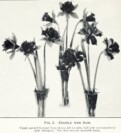 Telamonius Plenus, 4 Y-Y, Hybrideur Inconnu, 1620
Telamonius Plenus, 4 Y-Y, Hybrideur Inconnu, 1620
Photo #60354 Vee Kozma, Etats-Unis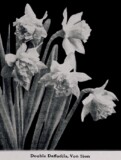 Telamonius Plenus, 4 Y-Y, Hybrideur Inconnu, 1620
Telamonius Plenus, 4 Y-Y, Hybrideur Inconnu, 1620
Photo #60157 Vee Kozma, Etats-Unis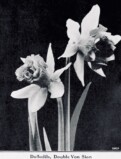 Telamonius Plenus, 4 Y-Y, Hybrideur Inconnu, 1620
Telamonius Plenus, 4 Y-Y, Hybrideur Inconnu, 1620
Photo #60127 Vee Kozma, Etats-Unis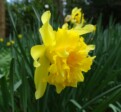 Telamonius Plenus, 4 Y-Y, Hybrideur Inconnu, 1620
Telamonius Plenus, 4 Y-Y, Hybrideur Inconnu, 1620
Photo #57939 Sue Taylor, Angleterre Telamonius Plenus, 4 Y-Y, Hybrideur Inconnu, 1620
Telamonius Plenus, 4 Y-Y, Hybrideur Inconnu, 1620
Photo #55730 Michael Baxter, Angleterre Telamonius Plenus, 4 Y-Y, Hybrideur Inconnu, 1620
Telamonius Plenus, 4 Y-Y, Hybrideur Inconnu, 1620
Photo #55402 Michael Baxter, Angleterre Telamonius Plenus, 4 Y-Y, Hybrideur Inconnu, 1620
Telamonius Plenus, 4 Y-Y, Hybrideur Inconnu, 1620
Photo #50445 Henry Shejbal, Italie Telamonius Plenus, 4 Y-Y, Hybrideur Inconnu, 1620
Telamonius Plenus, 4 Y-Y, Hybrideur Inconnu, 1620
Photo #47946 Bonnie Campbell, Etats-Unis Telamonius Plenus, 4 Y-Y, Hybrideur Inconnu, 1620
Telamonius Plenus, 4 Y-Y, Hybrideur Inconnu, 1620
Photo #47918 Eva Rentschler, Allemagne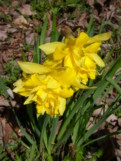 Telamonius Plenus, 4 Y-Y, Hybrideur Inconnu, 1620
Telamonius Plenus, 4 Y-Y, Hybrideur Inconnu, 1620
Photo #47917 Eva Rentschler, Allemagne Telamonius Plenus, 4 Y-Y, Hybrideur Inconnu, 1620
Telamonius Plenus, 4 Y-Y, Hybrideur Inconnu, 1620
Photo #47386 John F. McLennan, Nouvelle-Zélande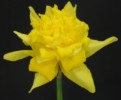 Telamonius Plenus, 4 Y-Y, Hybrideur Inconnu, 1620
Telamonius Plenus, 4 Y-Y, Hybrideur Inconnu, 1620
Photo #45903 Brenda Lyon, Australie Telamonius Plenus, 4 Y-Y, Hybrideur Inconnu, 1620
Telamonius Plenus, 4 Y-Y, Hybrideur Inconnu, 1620
Photo #42353 Hein Meeuwissen, Pays-bas Telamonius Plenus, 4 Y-Y, Hybrideur Inconnu, 1620
Telamonius Plenus, 4 Y-Y, Hybrideur Inconnu, 1620
Photo #32382 Michael Baxter, Angleterre Telamonius Plenus, 4 Y-Y, Hybrideur Inconnu, 1620
Telamonius Plenus, 4 Y-Y, Hybrideur Inconnu, 1620
Photo #20439 Brenda Lyon, Australie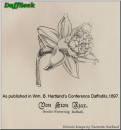 Telamonius Plenus, 4 Y-Y, Hybrideur Inconnu, 1620
Telamonius Plenus, 4 Y-Y, Hybrideur Inconnu, 1620
Photo #16739 Gertrude Hartland, Irlande Telamonius Plenus, 4 Y-Y, Hybrideur Inconnu, 1620
Telamonius Plenus, 4 Y-Y, Hybrideur Inconnu, 1620
Photo #16357 Henry Shejbal, Italie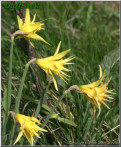 Telamonius Plenus, 4 Y-Y, Hybrideur Inconnu, 1620
Telamonius Plenus, 4 Y-Y, Hybrideur Inconnu, 1620
Photo #12164 Brian S. Duncan, Irlande du Nord Telamonius Plenus, 4 Y-Y, Hybrideur Inconnu, 1620
Telamonius Plenus, 4 Y-Y, Hybrideur Inconnu, 1620
Photo #11965 Ben Blake, Etats-Unis Telamonius Plenus, 4 Y-Y, Hybrideur Inconnu, 1620
Telamonius Plenus, 4 Y-Y, Hybrideur Inconnu, 1620
Photo #11964 Ben Blake, Etats-Unis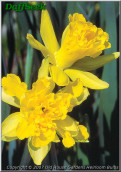 Telamonius Plenus, 4 Y-Y, Hybrideur Inconnu, 1620
Telamonius Plenus, 4 Y-Y, Hybrideur Inconnu, 1620
Photo #11387 Old House Gardens Heirloom Bulbs, Etats-Unis Telamonius Plenus, 4 Y-Y, Hybrideur Inconnu, 1620
Telamonius Plenus, 4 Y-Y, Hybrideur Inconnu, 1620
Photo #11347 Brenda Lyon, Australie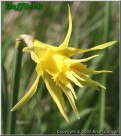 Telamonius Plenus, 4 Y-Y, Hybrideur Inconnu, 1620
Telamonius Plenus, 4 Y-Y, Hybrideur Inconnu, 1620
Photo #10726 Brian S. Duncan, Irlande du Nord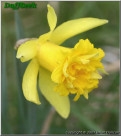 Telamonius Plenus, 4 Y-Y, Hybrideur Inconnu, 1620
Telamonius Plenus, 4 Y-Y, Hybrideur Inconnu, 1620
Photo #10725 Brian S. Duncan, Irlande du Nord Telamonius Plenus, 4 Y-Y, Hybrideur Inconnu, 1620
Telamonius Plenus, 4 Y-Y, Hybrideur Inconnu, 1620
Photo #10724 Brian S. Duncan, Irlande du Nord Telamonius Plenus, 4 Y-Y, Hybrideur Inconnu, 1620
Telamonius Plenus, 4 Y-Y, Hybrideur Inconnu, 1620
Photo #9885 Noeline McLaren, Nouvelle-Zélande Telamonius Plenus, 4 Y-Y, Hybrideur Inconnu, 1620
Telamonius Plenus, 4 Y-Y, Hybrideur Inconnu, 1620
Photo #8957 Ian Tyler, Angleterre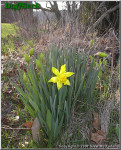 Telamonius Plenus, 4 Y-Y, Hybrideur Inconnu, 1620
Telamonius Plenus, 4 Y-Y, Hybrideur Inconnu, 1620
Photo #8754 Drew Mc Farland, Etats-Unis Telamonius Plenus, 4 Y-Y, Hybrideur Inconnu, 1620
Telamonius Plenus, 4 Y-Y, Hybrideur Inconnu, 1620
Photo #7847 Ian Tyler, Angleterre Telamonius Plenus, 4 Y-Y, Hybrideur Inconnu, 1620
Telamonius Plenus, 4 Y-Y, Hybrideur Inconnu, 1620
Photo #7748 Henry Shejbal, Italie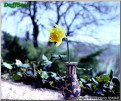 Telamonius Plenus, 4 Y-Y, Hybrideur Inconnu, 1620
Telamonius Plenus, 4 Y-Y, Hybrideur Inconnu, 1620
Photo #7747 Henry Shejbal, Italie Telamonius Plenus, 4 Y-Y, Hybrideur Inconnu, 1620
Telamonius Plenus, 4 Y-Y, Hybrideur Inconnu, 1620
Photo #6529 Mary Durtschi, Etats-Unis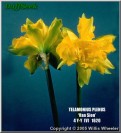 Telamonius Plenus, 4 Y-Y, Hybrideur Inconnu, 1620
Telamonius Plenus, 4 Y-Y, Hybrideur Inconnu, 1620
Photo #6296 Willis H. Wheeler, Etats-Unis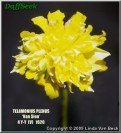 Telamonius Plenus, 4 Y-Y, Hybrideur Inconnu, 1620
Telamonius Plenus, 4 Y-Y, Hybrideur Inconnu, 1620
Photo #6132 Linda Van Beck, Etats-Unis Telamonius Plenus, 4 Y-Y, Hybrideur Inconnu, 1620
Telamonius Plenus, 4 Y-Y, Hybrideur Inconnu, 1620
Photo #6131 Linda Van Beck, Etats-Unis Telamonius Plenus, 4 Y-Y, Hybrideur Inconnu, 1620
Telamonius Plenus, 4 Y-Y, Hybrideur Inconnu, 1620
Photo #3572 Mary Lou Gripshover, Etats-Unis
![]()
